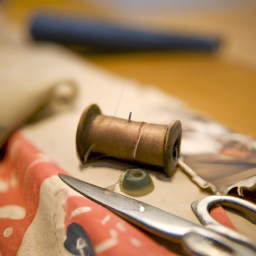
History of Electric Sewing Machines
sewing-machine.jpg” alt=”Electric Sewing Machine”>
Since the invention of the sewing machine in the early 19th century, this remarkable device has revolutionized the textile industry and transformed the way people create clothing and other fabric-related items. The development of electric sewing machines marked a significant advancement in this technology, providing greater speed, efficiency, and convenience to sewers, both domestic and industrial.
Electric sewing machines emerged in the late 19th century, replacing the manual and treadle-operated machines. The first electric machines incorporated a motor that replaced the manual foot pedal, allowing sewers to control the machine’s speed with the flick of a switch. This innovation significantly increased productivity and made sewing much more accessible to a wider population.
One of the key pioneers in electric sewing machine manufacturing was Singer Corporation, founded by Isaac Merritt Singer. In 1889, Singer introduced their first electric machine model, known as the Singer Model 27, which featured a built-in electric motor. This breakthrough propelled the company’s success and laid the foundation for their dominance in the sewing machine market.
Electric sewing machines quickly gained popularity among home sewers, professional tailors, and clothing manufacturers due to their speed and efficiency. The adoption of electric power reduced physical exertion, allowing sewers to complete projects more quickly and with less fatigue. The machines boasted advanced mechanisms, such as automatic thread tensioning, stitch selection, and even decorative stitching options, taking sewing to new heights.
Over the years, electric sewing machines continued to evolve with further advancements. These included features like computerized controls, programmable stitch patterns, and automatic buttonholers. The introduction of portable electric sewing machines made it even easier for people to sew on-the-go or in smaller spaces, further popularizing sewing as a hobby.
Today, electric sewing machines are available in a wide range of models, from basic domestic machines to high-performance industrial ones. They have become an essential tool for professional seamstresses, hobbyists, and even DIY enthusiasts. The ease of use, speed, and versatility of electric sewing machines have undoubtedly revolutionized the world of sewing.
As technology continues to advance, it will be fascinating to see how electric sewing machines further evolve and incorporate new features. However, no matter the progression, the history of electric sewing machines will forever be cherished as a significant milestone in the development of the sewing industry.




